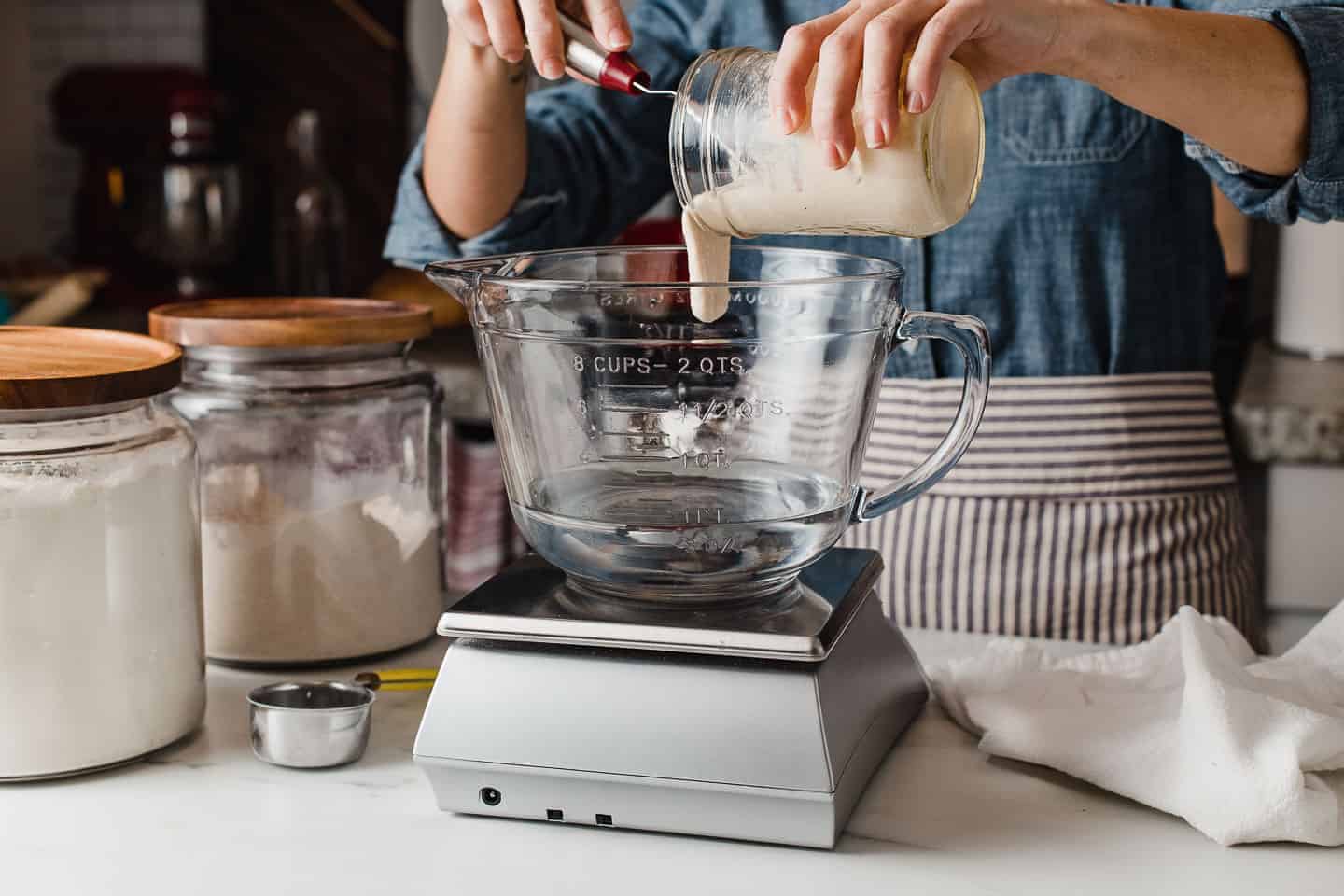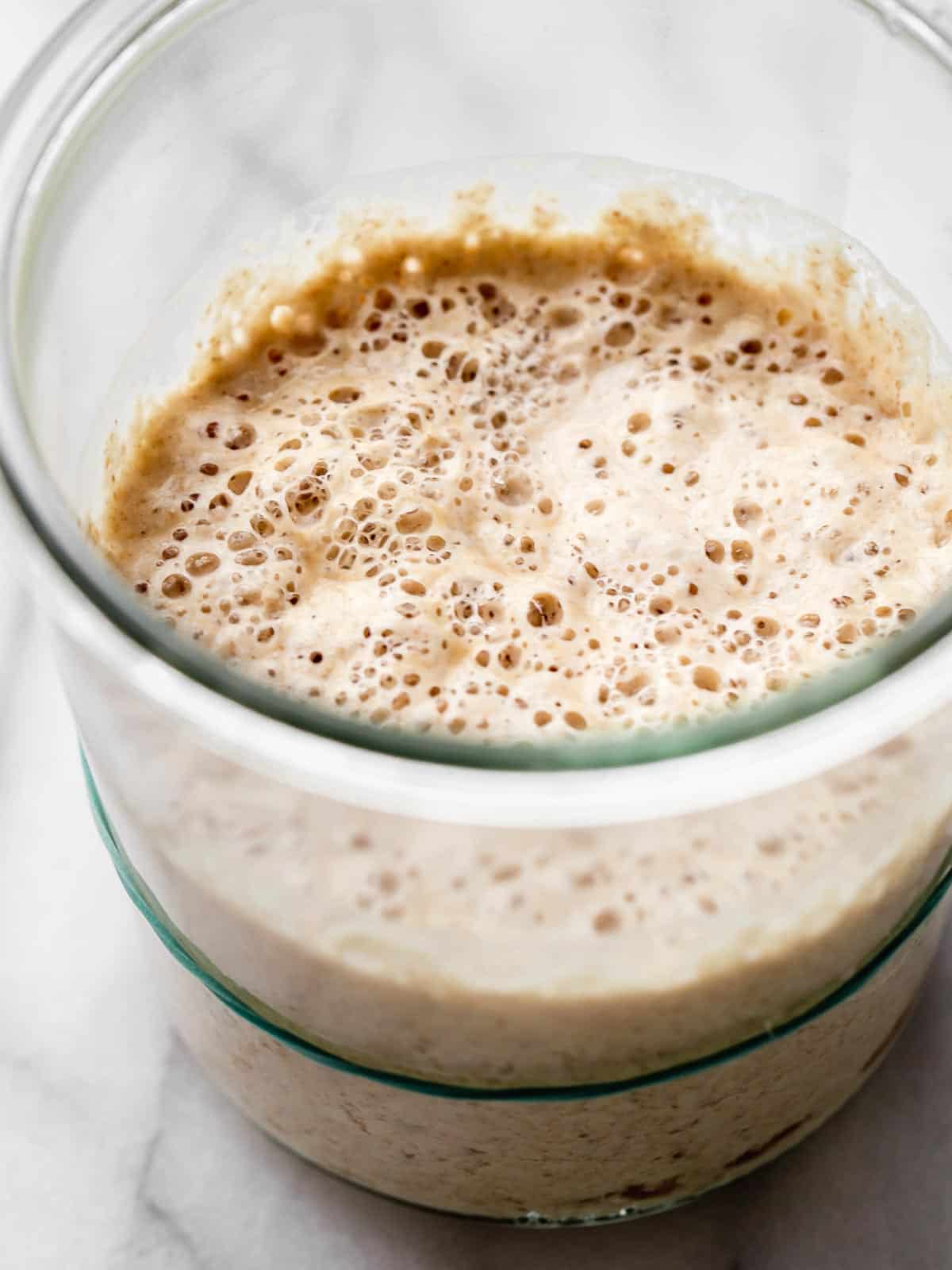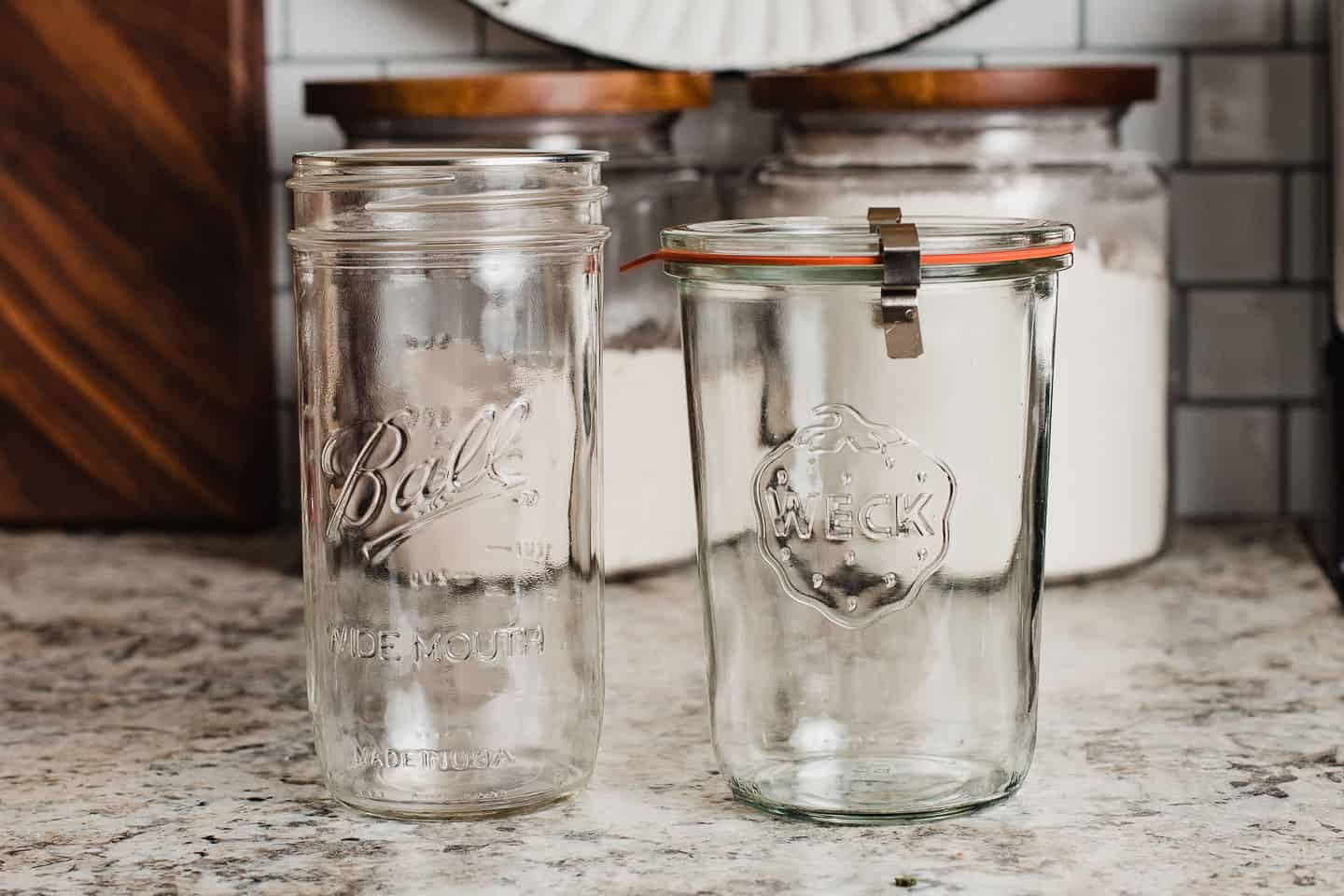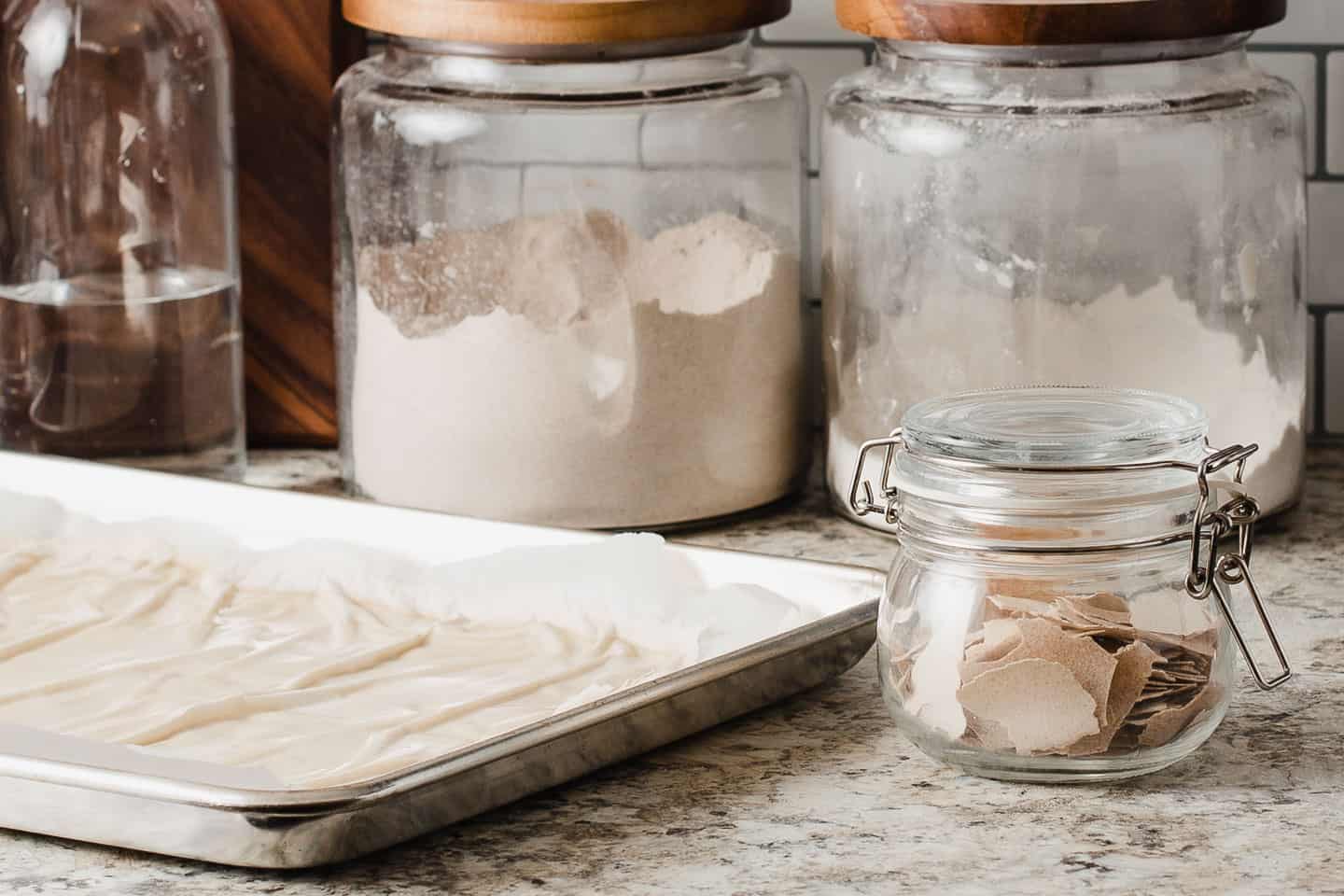Best Flour to Feed Sourdough Starter



Learn how to feed, maintain and save a backup of your sourdough starter the easy way!

There are MANY ways to feed and maintain a sourdough starter, and with so many tutorials online, the whole process can be a bit confusing.
This tutorial is designed for beginners and home bakers that wish to bake sourdough recipes and sourdough discard recipes with easy to follow directions.
In this tutorial, we break down how to feed and maintain your sourdough starter in a very easy and simplified way. Let's get started!
Jump to:
- When should I feed my sourdough starter?
- What is the best flour to feed my sourdough starter?
- What kind of water should I use in my sourdough starter?
- What container is best for storing a sourdough starter?
- How to make a backup of sourdough starter
- How Amy maintains her sourdough starter
When should I feed my sourdough starter?
A sourdough starter is like a pet, it has to be fed and cared for on a regular basis. The good news is that it's not as complicated as you may imagine.
There are really only a few reasons you might need to feed your starter. These include, but are not limited to:
- You bake daily and always need active sourdough starter on hand.
- You need active sourdough starter called for in a recipe.
- Your starter has been in the fridge for a while and needs to be refreshed.

How to feed sourdough starter daily
- If you bake daily, feed your starter with equal amounts of flour and water and store it at room temperature. The amount of flour and water you feed the starter will depend on the amount of starter that is needed for the recipe you are following.
How to feed sourdough starter for a specific recipe
- The portion of sourdough starter added to the dough is often referred to as active starter or levain. Simply feed the starter using the amounts called for in the recipe you are using.
Example: Our beginners sourdough bread recipe calls for ½ cup (50 g) of active starter. In order to build ½ cup of active starter, you will combine 1 tablespoon of your existing starter, with ½ cup of flour and ¼ cup of water in a clean jar. Stir, cover loosely and let rise at room temperature until it doubles in size.
How to feed sourdough starter if you don't bake often
- Sourdough starter can be stored in the fridge, unfed, for over a week and up to a few months without it going bad. As long as the starter remains cold, the fermentation of wild yeast will slow down and basically keep them "asleep" until they are brought back into a warm environment.
Don't be alarmed to find a dark liquid floating on the surface of the starter if you haven't fed it for a while. This is referred to as hooch, an indication that the starter is hungry and is perfectly normal. You can pour this liquid off or stir it back into the starter before feeding your starter. Incorporating the hooch back into the starter will produce a more sour starter.
How to refresh your starter after it has been in the fridge for a while
- Discard all but 25 grams and add 100 grams of filtered water and 100 grams of flour.
- Mix vigorously with a spatula, cover lightly and set on counter for a few hours to allow the yeast to multiply.
- Place the jar back into the fridge until the next time it needs to be refreshed or you wish to bake sourdough.

Collect the discarded sourdough starter in a separate container and store in the fridge.
Use it to make sourdough discard recipes like sourdough waffles, sourdough banana bread and sourdough cinnamon rolls.
What is the best flour to feed my sourdough starter?
Any wheat flour can be used to maintain your starter. Two common and economical varieties areall-purpose flour andwhole wheat flour.
Spelt, rye and einkorn varieties are also good choices for maintaining your starter.
You can also use a mix of flours in a sourdough starter. I feed my starter with a mixture of 75% all-purpose and 25% whole wheat flour.
A sourdough starter can be used to make bread recipes that call for flour that is different than the one you maintain it with.
For example, if you use 100% all-purpose flour to maintain your starter and you want to try a recipe that calls for whole wheat flour and bread flour, your existing starter will work fine. There is no need to feed the starter with the same flour as the recipe calls for.
What kind of water should I use in my sourdough starter?
Bottled water or tap water can be used. Tap water usually contains a small amount of chlorine, which could possibly affect your starter in a negative way. If you are concerned, remove the chlorine from tap water by evaporation. Fill a bottle with tap water and let it sit uncovered for 24 hours.
What container is best for storing a sourdough starter?
Store your sourdough starter in a glass container that is loosely covered. Wide-mouth canning jars with a canning lid set on top or Weck jars are our favorite containers to use for sourdough starter.
If you don't have a lid, you can use a piece of fabric or a coffee filter secured with a rubber band to cover the jar. Just note that the surface of the starter may dry out a bit.

How to make a backup of sourdough starter
It's wise to save a small amount of your starter as a backup. You could accidentally drop your jar or the starter could become contaminated by a fruit fly. (Fruit flies love sourdough starter!)
The last thing you want to do is start all over again!
How to dry sourdough starter
Spread 200 grams of sourdough discard into a thin layer on a silicone mat or a piece of parchment paper. Allow it air dry completely, about 3-4 days depending on the temperature and humidity of your kitchen.
I place the sheet in a cold oven to keep it free from any debris that might be floating in the air. Place a sticky note on the oven so that you don't forget it's in there!

Once it's dry, break the starter into pieces and place them in a glass jar with a tight fitting lid. Store in a cool dry place for 6-12 months.

To revive the dried sourdough starter, add 50 grams to a clean jar with 100 grams of water and 100 grams of flour. Let sit for 24 hours at room temperature.
The next day transfer 25 grams to a new jar and feed with 100 grams of water and 100 grams of flour. Feed the starter once a day until it starts to double in size.
How to freeze sourdough starter
Pour the starter into an ice cube tray and place in freezer until frozen. Transfer the cubes into a freezer-safe container and keep frozen for up to 1 year.
To reactivate the frozen starter, place a cube into a jar and allow it to thaw. Once fully thawed, feed with 100g water and 100g flour.
The next day transfer 25 grams to a new jar and feed with 100 grams of water and 100 grams of flour. Feed the starter once a day until it starts to double in size.
Make sure to check our list of essential tools for sourdough bread baking!
How Amy maintains her sourdough starter
I store my sourdough starter in the refrigerator, in a large covered container. When I want to bake sourdough, I take a small amount from the container and transfer it to a clean jar.
The amount I take will depend on the recipe I am making.
For example, if I need 100 grams of active starter, I will use 15 g starter, 50 g flour and 50 g water. This will technically produce 115 g of active starter, but I 'd rather err on the side of caution and have enough for the recipe rather than too little.
I let the starter sit at room temperature overnight so that it's ready to use, first thing in the morning.
Any remaining starter that is leftover, once the dough is mixed, gets transferred back into the container in the fridge.
When I want to make a sourdough discard recipe, such as my favorite weekly sourdough pancakes or sourdough pizza crust, I take the amount needed from the container and add it straight to the dough. No feeding is necessary with sourdough discard recipes.
Once the sourdough starter starts to get low, I add equal amounts of flour and water to the container, let it rise for a few hours and then pop it back into the fridge to keep it going!
Do you like this recipe? Make sure to subscribe to our newsletter and we'll send you the latest and greatest!
This post was first published in May 2020 and revised in August 2022 to simplify the instructions, with updated information and photos.
Source: https://littlespoonfarm.com/how-to-feed-maintain-sourdough-starter/#:~:text=sourdough%20cinnamon%20rolls.-,What%20is%20the%20best%20flour%20to%20feed%20my%20sourdough%20starter,choices%20for%20maintaining%20your%20starter.
0 Response to "Best Flour to Feed Sourdough Starter"
Post a Comment